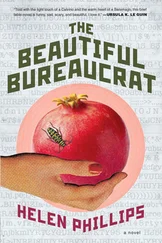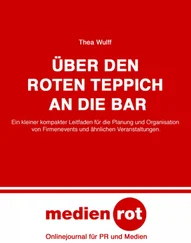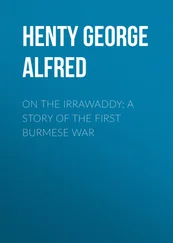Babur - The Bābur-nāma
Здесь есть возможность читать онлайн «Babur - The Bābur-nāma» — ознакомительный отрывок электронной книги совершенно бесплатно, а после прочтения отрывка купить полную версию. В некоторых случаях можно слушать аудио, скачать через торрент в формате fb2 и присутствует краткое содержание. Жанр: foreign_antique, foreign_prose, на английском языке. Описание произведения, (предисловие) а так же отзывы посетителей доступны на портале библиотеки ЛибКат.
- Название:The Bābur-nāma
- Автор:
- Жанр:
- Год:неизвестен
- ISBN:нет данных
- Рейтинг книги:4 / 5. Голосов: 1
-
Избранное:Добавить в избранное
- Отзывы:
-
Ваша оценка:
- 80
- 1
- 2
- 3
- 4
- 5
The Bābur-nāma: краткое содержание, описание и аннотация
Предлагаем к чтению аннотацию, описание, краткое содержание или предисловие (зависит от того, что написал сам автор книги «The Bābur-nāma»). Если вы не нашли необходимую информацию о книге — напишите в комментариях, мы постараемся отыскать её.
The Bābur-nāma — читать онлайн ознакомительный отрывок
Ниже представлен текст книги, разбитый по страницам. Система сохранения места последней прочитанной страницы, позволяет с удобством читать онлайн бесплатно книгу «The Bābur-nāma», без необходимости каждый раз заново искать на чём Вы остановились. Поставьте закладку, и сможете в любой момент перейти на страницу, на которой закончили чтение.
Интервал:
Закладка:
IX
My information concerning Baburiana under Shah-i-jahan Padshah (1628-58) is very meagre. It consists of (1) his attestation of a signature of Babur (App. Q and photo), (2) his possession of Babur’s autograph Codex ( Padshah-nama , Bib. Ind. ed., ii, 4), and (3) his acceptance, and that by his literary entourage, of Mir Abu-talib Husaini’s Persian translation of Timur’s Annals, the Malfuzat whose preparation the Zafar-nama describes and whose link with Babur’s writings is that of the exemplar to the emulator. 17 17 For Shah-i-jahan’s interest in Timur see sign given in a copy of his note published in my translation volume of Gul-badan Begim’s Humayun-nama , p. xiii.
X
The Haidarabad Codex may have been inscribed under Aurang-zib Padshah (1655-1707). So many particulars about it have been given already that little needs saying here. 18 18 JRAS. 1900 p. 466, 1902 p. 655, 1905 art. s. n. , 1908 pp. 78, 98; Index in loco s.n.
It was the grande trouvaille of my search for Turki text wherewith to revive Babur’s autobiography both in Turki and English. My husband in 1900 saw it in Haidarabad; through the kind offices of the late Sayyid Ali Bilgrami it was lent to me; it proved to surpass, both in volume and quality, all other Babur-nama MSS. I had traced; I made its merits known to Professor Edward Granville Browne, just when the E. J. Wilkinson Gibb Trust was in formation, with the happy and accordant result that the best prose book in classic Turki became the first item in the Memorial — matris ad filium – of literary work done in the name of the Turkish scholar, and Babur’s very words were safeguarded in hundred-fold facsimile. An event so important for autobiography and for Turki literature may claim more than the bald mention of its occurrence, because sincere autobiography, however ancient, is human and social and undying, so that this was no mere case of multiplying copies of a book, but was one of preserving a man’s life in his words. There were, therefore, joyful red-letter days in the English story of the Codex – outstanding from others being those on which its merits revealed themselves (on Surrey uplands) – the one which brought Professor Browne’s acceptance of it for reproduction by the Trust – and the day of pause from work marked by the accomplished fact of the safety of the Babur-nama.
XI
The period from cir. 1700, the date of the Haidarabad Codex, and 1810, when the Elphinstone Codex was purchased by its sponsor at Peshawar, appears to have been unfruitful in work on the Hindustan MSS. Causes for this may connect with historic events, e. g. Nadir Shah’s desolation of Dihli and the rise of the East India Company, and, in Baburiana, with the disappearance of Babur’s autograph Codex (it was unknown to the Scots of 1800-26), and the transfer of the Elphinstone Codex from royal possession – this, possibly however, an accident of royal travel to and from Kabul at earlier dates.
The first quarter of the nineteenth century was, on the contrary, most fruitful in valuable work, useful impulse to which was given by Dr. John Leyden who in about 1805 began to look into Turki. Like his contemporary Julius Klaproth ( q. v. ), he was avid of tongues and attracted by Turki and by Babur’s writings of which he had some knowledge through the ‘Abdu’r-rahim (Persian) translation. His Turki text-book would be the MS. of the Asiatic Society of Bengal, 19 19 Cf. JRAS. 1900, Nos. VI, VII, VIII.
a part-copy of the Bukhara compilation, from which he had the India Office MS. copied. He took up Turki again in 1810, after his return from Malay and whilst awaiting orders in Calcutta for departure to Java. He sailed in the autumn of the year and died in August 1811. Much can be learned about him and his Turki occupations from letters ( infra xiii) written to Erskine by him and by others of the Scottish band which now achieved such fine results for Babur’s Autobiography.
It is necessary to say something of Leyden’s part in producing the Memoirs , because Erskine, desiring to “lose nothing that might add to Leyden’s reputation”, has assigned to him an undue position of collaboration in it both by giving him premier place on its title-page and by attributing to him the beginning the translation. What one gleans of Leyden’s character makes an impression of unassumption that would forbid his acceptance of the posthumous position given to him, and, as his translation shews the tyro in Turki, there can be no ground for supposing he would wish his competence in it over-estimated. He had, as dates show, nothing to do with the actual work of the Memoirs which was finished before Erskine had seen in 1813 what Leyden had set down before he died in 1811. As the Memoirs is now a rare book, I quote from it what Erskine says (Preface, p. ix) of Leyden’s rough translation: – “This acquisition ( i. e . of Leyden’s trs.) reduced me to rather an awkward dilemma. The two translations (his own and Leyden’s) differed in many important particulars; but as Dr. Leyden had the advantage of translating from the original, I resolved to adopt his translation as far as it went, changing only such expressions in it as seemed evidently to be inconsistent with the context, or with other parts of the Memoirs , or such as seemed evidently to originate in the oversights that are unavoidable in an unfinished work. 20 20 Ilminski’s difficulties are foreshadowed here by the same confusion of identity between the Babur-nama proper and the Bukhara compilation (Preface, Part iii, p. li).
This labour I had completed with some difficulty, when Mr. Elphinstone sent me the copy of the Memoirs of Baber in the original Tūrkī ( i. e. The Elphinstone Codex) which he had procured when he went to Peshawar on his embassy to Kabul. This copy, which he had supposed to have been sent with Dr. Leyden’s manuscripts from Calcutta, he was now fortunate enough to recover (in his own library at Poona). “The discovery of this valuable manuscript reduced me, though heartily sick of the task, to the necessity of commencing my work once more.”
Erskine’s Preface (pp. x, xi) contains various other references to Leyden’s work which indicate its quality as tentative and unrevised. It is now in the British Museum Library.
XII
Little need be said here about the Memoirs of Baber . 21 21 Cf. Erskine’s Preface passim , and in loco item XI, cap. iv. The Memoirs of Baber , and Index s. n.
Erskine worked on a basis of considerable earlier acquaintance with his Persian original, for, as his Preface tells, he had (after Leyden’s death) begun to translate this some years before he definitely accepted the counsel of Elphinstone and Malcolm to undertake the Memoirs . He finished his translation in 1813, and by 1816 was able to dedicate his complete volume to Elphinstone, but publication was delayed till 1826. His was difficult pioneer-work, and carried through with the drawback of working on a secondary source. It has done yeoman service, of which the crowning merit is its introduction of Babur’s autobiography to the Western world.
XIII
Amongst Erskine’s literary remains are several bound volumes of letters from Elphinstone, Malcolm, Leyden, and others of that distinguished group of Scots who promoted the revival of Babur’s writings. Erskine’s grandson, the late Mr. Lestocq Erskine, placed these, with other papers, at our disposal, and they are now located where they have been welcomed as appropriate additions: – Elphinstone’s are in the Advocates’ Library, where already (1826) he, through Erskine, had deposited his own Codex – and with his letters are those of Malcolm and more occasional correspondents; Leyden’s letters (and various papers) are in the Memorial Cottage maintained in his birthplace Denholm (Hawick) by the Edinburgh Border Counties Association; something fitting went to the Bombay Asiatic Society and a volume of diary to the British Museum. Leyden’s papers will help his fuller biography; Elphinstone’s letters have special value as recording his co-operation with Erskine by much friendly criticism, remonstrance against delay, counsels and encouragement. They, moreover, shew the estimate an accomplished man of modern affairs formed of Babur Padshah’s character and conduct; some have been quoted in Colebrooke’s Life of Elphinstone , but there they suffer by detachment from the rest of his Baburiana letters; bound together as they now are, and with brief explanatory interpolations, they would make a welcome item for “Babur Padshah’s Book-pile”.
Читать дальшеИнтервал:
Закладка:
Похожие книги на «The Bābur-nāma»
Представляем Вашему вниманию похожие книги на «The Bābur-nāma» списком для выбора. Мы отобрали схожую по названию и смыслу литературу в надежде предоставить читателям больше вариантов отыскать новые, интересные, ещё непрочитанные произведения.
Обсуждение, отзывы о книге «The Bābur-nāma» и просто собственные мнения читателей. Оставьте ваши комментарии, напишите, что Вы думаете о произведении, его смысле или главных героях. Укажите что конкретно понравилось, а что нет, и почему Вы так считаете.











